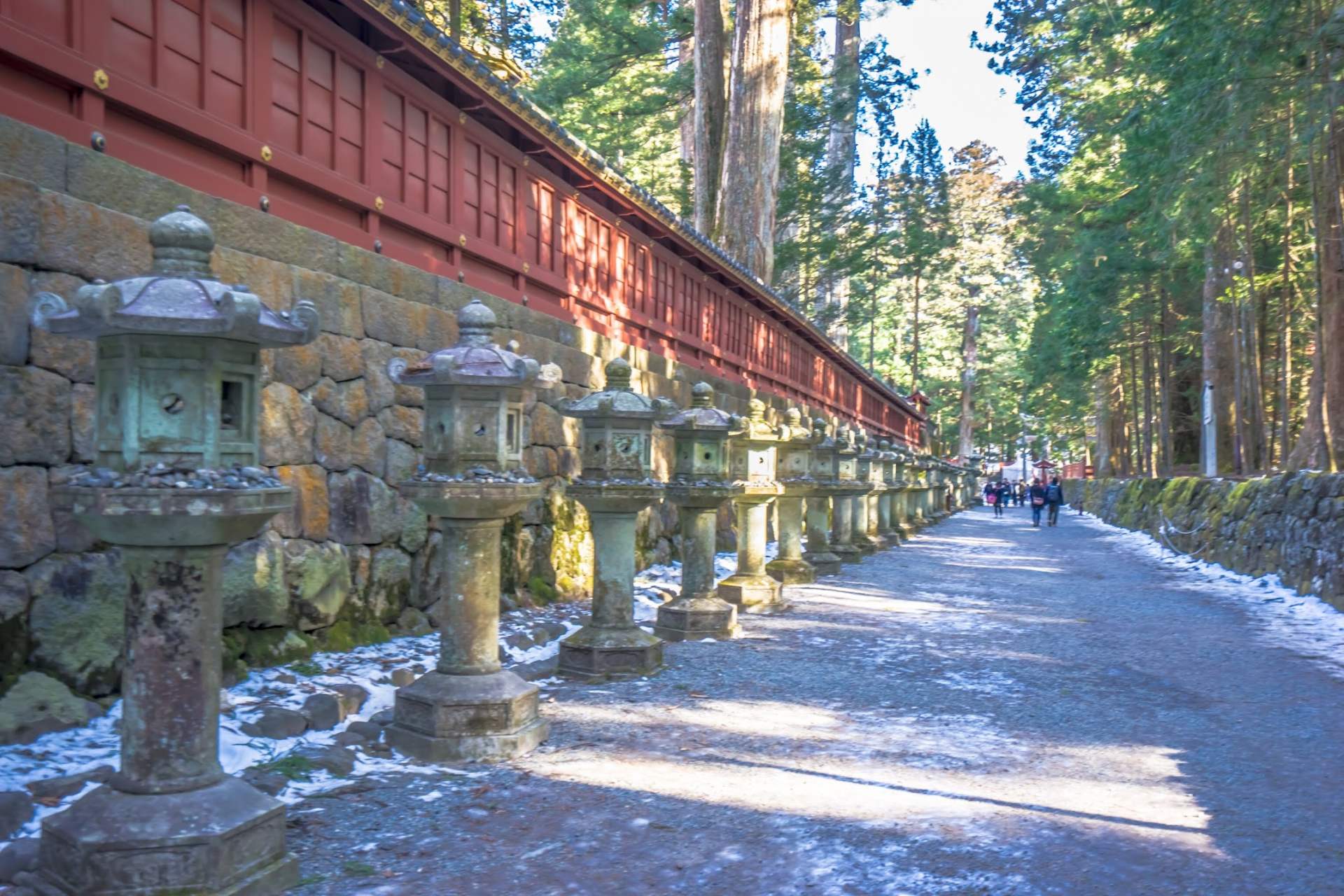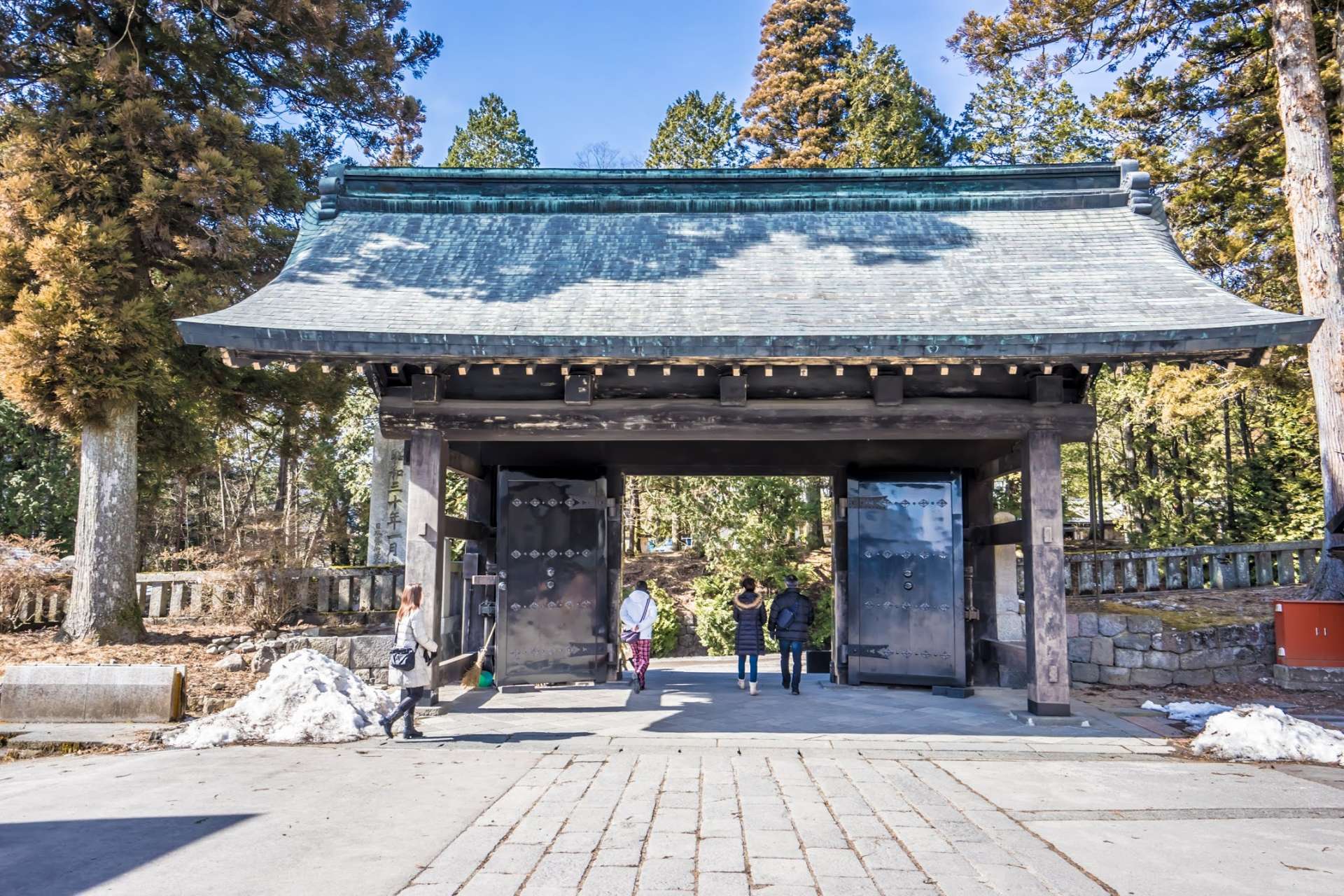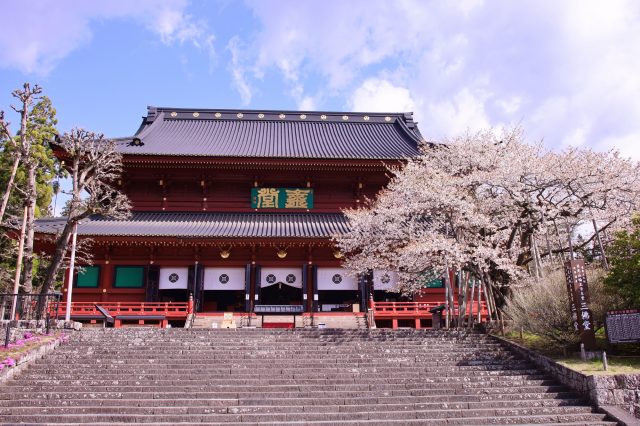
Day 2 of Winter Travel in Nikko ~Mt. Nikko Rinno-ji and Nikko Toshogu Shrine~
page 3
Visiting Mt. Nikko Rinno-ji
Next I headed to Mt. Nikko Rinno-ji. It’s located about 5 minutes on foot from Shinkyo Bridge.


I arrived at Mt. Nikko Rinno-ji.
When you arrive, you’re greeted by a statue of Shodo Shonin, who founded the temple in the year 766.


A pitch-black torii gate called “kuromon”

Sanbutsudo
What stands out the most is “Sanbutsudo,” the largest wooden building in eastern Japan, but it was covered by a massive picture as the building itself had just started undergoing major repairs.
※The building was undergoing repairs at the time of this visit, but repairs are now complete.

You can go inside Sanbutsudo, and it is home to 3 statues of Buddha, called Senju Kannon, Amida Nyorai, and Batou Kannon. However, photography is prohibited inside Sanbutsudo.
I also visited the treasure house and Shoyo-en (a Japanese garden). (Admission fee 300 yen)

The treasure house preserves, studies, and displays historically and artistically valuable items related to Mt. Nikko’s history. Photography is prohibited.
Shoyo-en is a chisen-kaiyu-shiki Japanese garden that occupies about 3200 square meters of space.
Below is a photo of Shoyo-en.

You can enjoy different versions of the garden in each of the four seasons.
Apparently it’s illuminated at night during autumn leaves season.



Rice Omelet for Lunch at “Meiji-no-Yakata”
For lunch, I stopped by “Meiji-no-Yakata,” a western-style restaurant about a 5-minute walk from Nikko Rinno-ji.
They serve western-style dishes reminiscent of the Meiji period.

The building that “Meiji-no-Yakata” uses was originally a villa owned by American trading merchant F.W. Horn, who first introduced the electric gramophone to Japan. In 1977 it was first opened as a western-style restaurant.

Their most popular dish is their rice omelet (omurice), the iconic western-style dish of the era.
I ordered the rice omelet (1,600 yen) and croquettes.

Author
Birth place: Tokyo
Kosu
While living outside of Japan for a while, I began appreciating what Japan has to offer.



